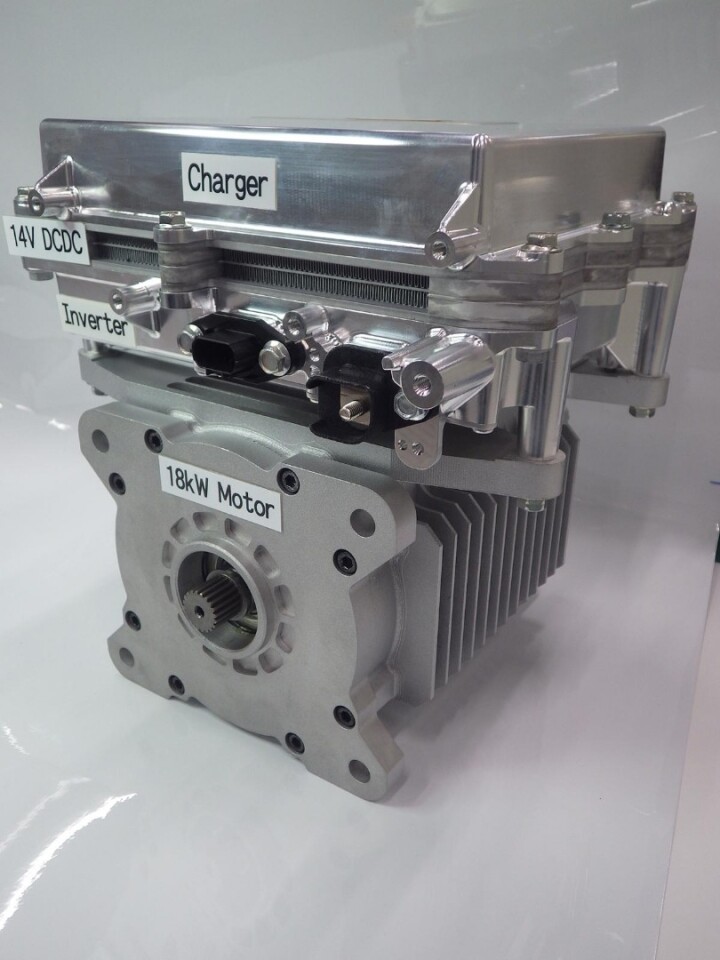Going fully electric and autonomous can beautifully liberate the architecture of vehicles. It allows the cabin or cargo hold to be completely separate from the drivetrain, and it opens up the potential for a fully modular transporter like Panasonic's SPACe_C, unveiled at CES.
With no complex mechanical steering and transmission inputs needed to interface between the top and bottom layers, it's possible to make them totally separate units, enabling a click-on, click-off architecture that lets one drivetrain unit perform a variety of different jobs depending on what's sitting on its back.
Panasonic has been working on this kind of modular vehicle platform for some time now, presenting an initial concept at last year's CES. This year, the e-Torta (the lower drive section, so named to evoke a parent turtle carrying a baby on its back) has been refined with a new 48-volt powertrain that's modular in its own right, incorporating a nicely integrated block that brings together the charger, inverter and 18-kW (24-hp) motor.

The platform is 3.85 x 1.68 m horizontally (12.6 by 5.5 ft) and stands 1.95 m (6.4 ft) tall with a passenger or cargo module on top.
Panasonic sees initial use cases for the SPACe_C concept as a food truck, a mobile meeting space, a delivery vehicle, a mobile pop-up retail store and a mobile educational presentation space. The CES presentation focused on the idea of a mobile fresh food service, bringing climate-controlled fruits and veggies around the neighborhood like a healthy version of an ice cream truck – and certainly, the regular old non-healthy version would be just as easy to achieve.
Different top modules could easily be created for each of these use cases, either using their own power source or drawing from the e-Torta's battery. Top modules may include a driver's seat and electronic controls, but once suitable autonomous technology is available, the drivetrain could just as easily respond to self-driving inputs.
The company believes its experience making lighting, ventilation and other home comfort technologies will serve it well when it comes to making the top module a comfortable and pleasant place to be.
It's just a concept for the time being, and Panasonic is far from the only company working on a totally modular electric vehicle architecture like this. But it's an interesting sign that an electronics company like Panasonic could easily become a key player in a future electric transport market.
Source: Panasonic






